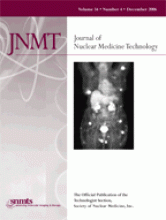Abstract
When body position changes from erect to supine, the effect of gravity on the organs also changes and is a possible underlying mechanism for upward creep of the heart during SPECT acquisitions. We hypothesized that if we provide enough time for the organs to settle after a positional change, the range of this vertical motion causing reconstruction artifacts can be decreased. Our aim was to evaluate the effect that a 5-min bed rest on the imaging table before both rest and stress SPECT acquisitions would have on upward creep of the heart. Methods: Before both stress and rest SPECT acquisitions, the first 101 consecutive patients (group A) had a 5-min bed rest and the remaining 99 patients (group B) did not have any bed rest after they were positioned on the imaging table. Upward creep was detected by comparing the distance between the lower edge of the image and the lowest part of the heart silhouette on the last projection image of detector 2 and the first projection image of detector 1. Results: Upward creep was found in 53% (54/101) and 55% (56/101) of patients in group A and in 89% (88/99) and 86% (85/99) of patients in group B in stress and rest SPECT studies, respectively. Upward creep of the heart was decreased prominently in group A, and this decrease was statistically significant (p < 0.001). Conclusion: We conclude that before SPECT acquisition, at least a 5-min bed rest on the imaging table significantly decreases vertical motion of the heart.







